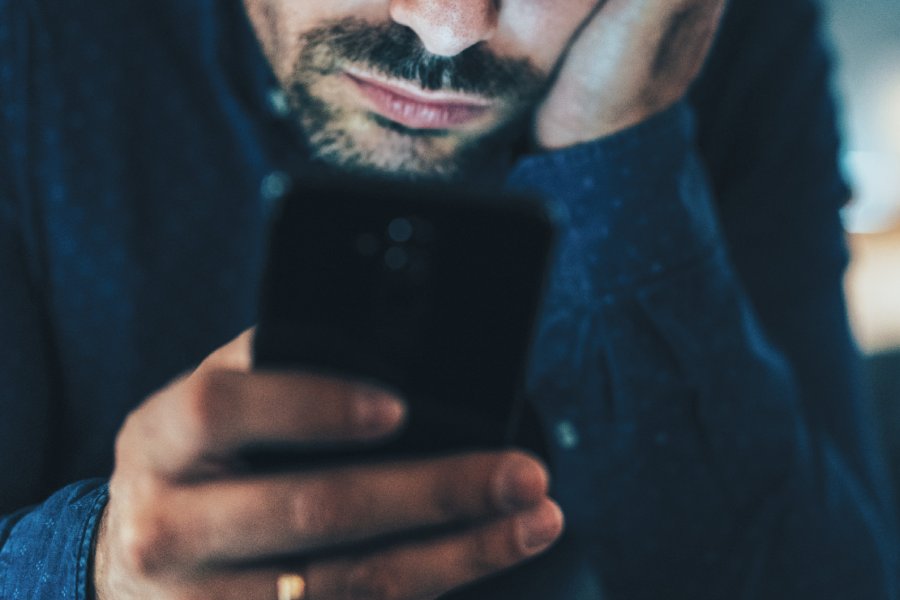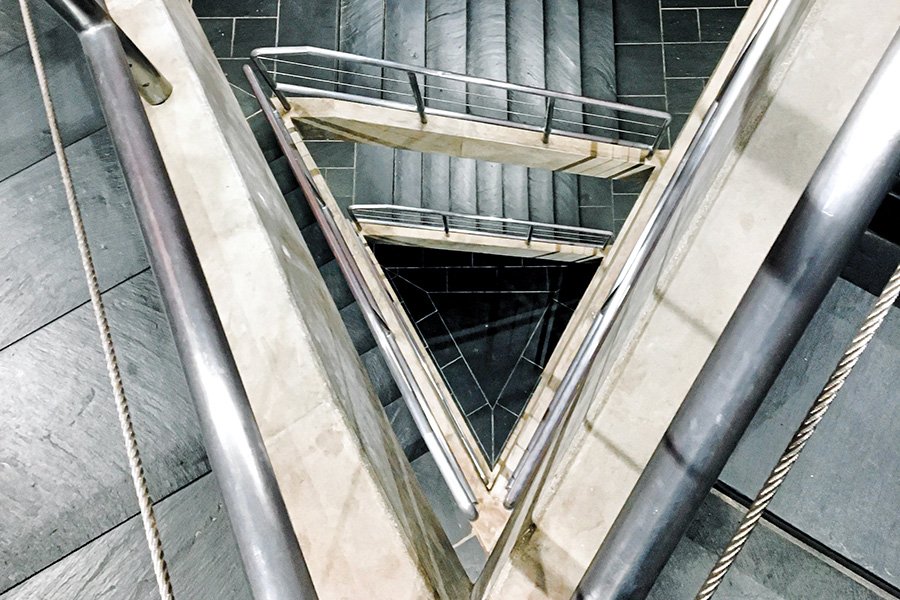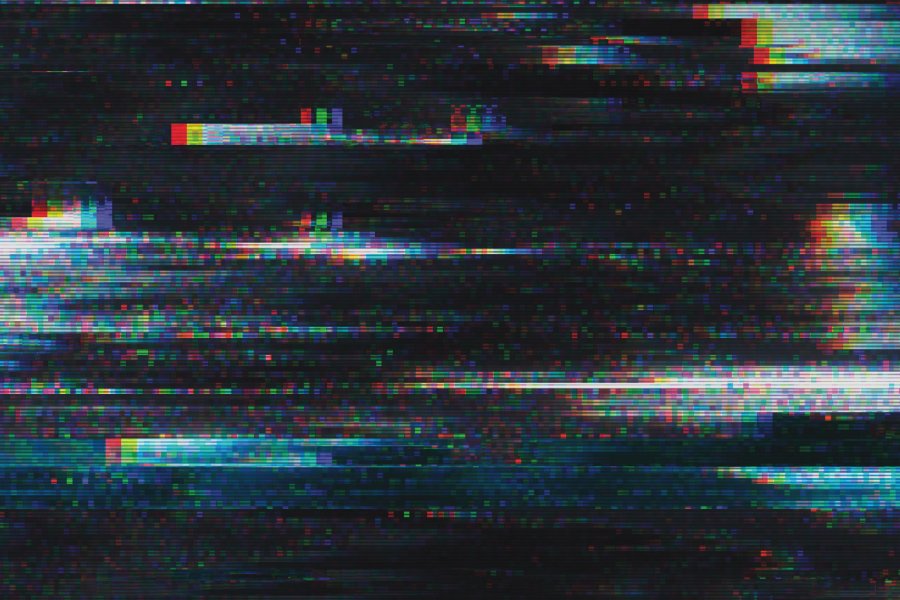Gathering around the muted glow of a household box television in the living room, all watch with keen curiosity the 6 p.m. evening news. Maybe it’s CBS, ABC, or NBC—Walter Cronkite, Howard Smith, Garrick Utley, or the like.
The next morning, a cup of piping hot black coffee is familiar company to the local newspaper that leaves an inky print on fingers as they turn from the national news section to hometown happenings, comics, opinions, and the classifieds.
It’s the 1970s, and during this snapshot in time, families relied on a handful of reporters to be their main source of information—to speak into the current affairs that affected them and the world, from Vietnam back to the United States.
This is how the executive director of the Gettysburg College Eisenhower Institute, Tracie Potts—who went on to work more than two decades as a Washington, D.C., correspondent for NBC News beginning in the early 2000s—and many others born in the years leading up to the digital revolution remember news and media in their early days.
It was a daily ritual, a shared experience, and one that you could turn on and off, easily, with the click of a remote button or by folding up the paper. And once you were finished watching the newscast or reading it in print, you did just this, waiting until the following day brought a new flow of news.
“One of the most common and routine findings in political science is that our political socialization begins in the household where we’re raised,” said Political Science Prof. Scott Boddery. “This is one of the first footholds into media literacy, beyond classrooms, that have an incredibly important impact on the perspectives of young people.”
Today, it’s the touch screen of a cell phone that’s at the tip of our fidgeting fingers, not ink. The vast majority—from young children to teenagers and adults—carry the world in their pockets, everywhere, and they rarely turn it off.
Buzz: A devastating earthquake rattles the West Coast.
Buzz: A friend liked your latest Instagram post.
Buzz: Politicians share their take on last night’s debate.
Buzz: Hollywood’s most beloved couple announces their separation.
Buzz...
“The idea that there’s a figure like Walter Cronkite whom the nation could tune into all at once and trust what was being delivered is no longer the landscape in which we’re living,” said Scott Sauer ’87, who serves as the vice president of partnerships at PBS Distribution, and much like Potts, has worked for more than 30 years in media.
“From the ’90s to the early 2000s, we went from basic reporting to the 24/7 news cycle that social media created,” Potts said. “Now, everyone has the ability to share information with the world on their platforms, without always providing the context that a good, trained reporter should. That makes it really hard for people to understand what they’re getting—facts or misinformation.”

Living in a world of 24/7 news
Few will forget March 2020 in their lifetime. Stuck in the confines of their homes, many deeply depended on their smartphones to both stay up to date on COVID-19’s daily developments—as historic unknowns unfolded in real time—and escape reality through the creativity and community that social media offered.
TikTok and meme culture saw an uptick in popularity as teens and older adults alike shimmied to catchy song lyrics and shared laughs. Simultaneously, information and misinformation were running nearly as rampant as the COVID-19 virus.
Similar to the cartoon spreads that cartoonist for The New Yorker and The Boston Globe Christopher Weyant ’89 remembers enjoying in traditional newspapers decades ago, during recent years, entertainment has been intermingling with information in a modern setting. Unlike newspapers, however, the wide spectrum of fun, fact, and fiction is served to individuals based upon their interactions with it.
The more users engage with a particular type of content, the more related content they receive. Pro-vaccine or anti-vaccine? Pro-choice or pro-life? Gun rights or gun control? The list of divisive questions fed by filter bubbles can go on and on, relating to COVID-19, politics, and everything in between.
“What we’re seeing with the modern media environment is what’s called media fragmentation. Not only is it constantly available to us, but there’s a plethora of choices. And the choices are extraordinarily serving a niche audience or speaking with a pretty precise voice and perspective,” Boddery said. “This really isn’t a great thing because as we select only the news we want, we become less thoughtful in what we’re reading, and this can create an echo chamber where information that we disagree with is silenced completely.”
Sociology Prof. Alecea Standlee, who specializes in teaching and research in the areas of gender, social theory, sociology of technology, and social inequality, encourages her students to think about the stories media is telling them and how they might be different if they had different algorithmic patterns devoid of information silos or “filter bubbles.” Furthermore, she asks them,How might the story change if you were consuming it through an alternative form of media or news outlet?
“People like to see people who are like them, who share their characteristics, and who share their beliefs. That makes them feel comfortable and happy, and comfortable and happy people spend more time engaged with the media,” Standlee said. “We have to get people to understand the motivation behind media—that media is trying to get their attention, and what they’re seeing on their feeds isn’t random. What they’re seeing is filtered…whether it be photos on Instagram, biased information, or content and advertisements served to them based upon what they’re interacting with online.”
Standlee continued by saying that no technology is entirely good or entirely bad. By having round-the-clock access to media—both for consuming and creating—individuals have access to the world’s knowledge, wonders, and challenges, a platform to which they can share their voice and creativity, engage in discord, and find community, all of which are innately fruitful. But in the wrong hands, people can fall into the trap of misinformation and alienation, losing trust in and losing sight of the true value of media.
“I implore people to read, research, think, and participate,” Weyant said. “To do so is what makes the digital world a valuable one.”

Finding truth, balance amid the buzz
Our founding fathers were well aware of the need to have a free press—a marketplace of ideas, whether or not people agree with them. It’s why they penned it into the First Amendment.
“The underlying theory of a free press comes from the philosopher Condorcet who says that rationality and reason will win the day, eventually, but you need to let the debate happen. It takes time,” Boddery said. “Of course, the founding fathers would never have anticipated technology to be the way it is: the 24-hour news cycle and these apps on our phones that we’re carrying in our pockets. So, that adds a layer of complexity to this amendment.”
Navigating this marketplace of ideas isn’t for the faint of mind or heart. It takes sharp critical thinking skills, practice, and sometimes a little help from trusted resources like Musselman Library’s Research, Instruction, and Information Literacy Librarian Clinton Baugess, who offers one-on-one information literacy guidance to students, faculty, and staff.
“Libraries are no longer just big buildings that hold a bunch of books, but they truly help people identify the roots of information, where it comes from, and what information you can trust,” said Standlee, who encourages her students to utilize Musselman Library’s wealth of knowledge and resources for digital literacy development. “And trust—as it relates to information—I think, is perhaps the most important tool of the 21st century.”
While the development of these tools of the times often begin at home and are further nurtured in academic settings, they remain ever-important, and they metamorphose with us through life as we navigate the abundant instances that demand critical thinking.

It’s this forward-looking approach that the liberal arts and sciences wrap their arms around and that Baugess too embraces wholeheartedly. He challenges and supports faculty in redesigning assignments so that students may engage with a variety of sources, read against algorithms, and practice the information literacy skills that will prepare them to be leaders in life.
“I want to empower students to be lifelong critical and careful consumers of information,” Baugess said. “But, I also want them to be creators of information, and to do that in a way that is ethical, no matter what that looks like in the future—to be conscious of the forces at work that may shape how people engage with that information, how people relate with each other, and how people make decisions.”
As written in the mission statement of The News Literacy Project, a nonpartisan national education nonprofit where Kymberly Deane ’18 proudly works, “The practice of news literacy throughout American society [creates] better informed, more engaged, and more empowered individuals—and ultimately, a stronger democracy.”
Much like Baugess, Boddery, Potts, Standlee, and countless other educators at Gettysburg College and across the globe, The News Literacy Project is committed to helping the public better understand the news.
The News Literacy Project works with teachers and journalists to ensure that students are equipped with the skills needed to discern fact from fiction and that they know what information and sources to trust by taking advantage of free online resources like Checkology—for which Potts teaches one of the many digital lessons available. A longtime champion of this nonprofit’s work, Potts also sits on its National Leadership Council.
“To be a good citizen and an active participant in our communities and civic lives, we need to distinguish fact from fiction because we are taking that information and using it to make important decisions in our lives—and those decisions affect our community and country,” said Deane, manager of donor engagement for The News Literacy Project. “People with strong news literacy skills are armed with the facts to make important decisions, vote responsibly, and rally for transformational causes. It’s an investment into the future.”
Leading the way through the unknown
Aristotle once said, “The more you know, the more you know you don’t know.” In many ways, the same is true for media and its abundance. There are no longer just two sides to a story if you are curious enough to seek them out. And, Gettysburgians often do.
“When you come from a liberal arts and sciences background like Gettysburg, you’re given the groundwork and desire to explore different viewpoints, cultures, and thought processes,” Sauer said. “I think that sparks a natural, lifelong curiosity.”
For the curious, there’s no finish line for learning more about the world—rather than accepting things at face value, they engage, dialogue, dig, and seek to truly understand the truth. When this way of thinking and living is embraced wholeheartedly, in how media is consumed and otherwise, it has the power to create ripples.

“The best thing that people do, who want others to broaden their horizons and take a more expansive view of the world, is to demonstrate to others that it’s an iterative, ongoing process that they’re engaged in as well,” said Ben Pontz ’20, who was editor-in-chief of The Gettysburgian and is on target to earn his J.D. from Harvard in 2024. “If the education of Gettysburg College has done its job, it has revealed that you don’t have all the answers, but you can ask better questions to try to learn what those answers are.”
While it may not be known how exactly the media will look decades from now, wherever the metaverse will take us, it’s generally agreed that it’s never going to stay exactly where it is for long—for better or for worse. However, what is bound to transcend the times is a need for information, a desire for truth, and the pillar of the liberal arts and sciences: a capacity for critical thinking.
“The skills that I’m hoping students develop and the concepts that they understand will transfer into their lives after Gettysburg, even when a grade is no longer on the line—the same careful reading, thoughtful thinking, and the larger value of lifelong learning,” Baugess said. “These skills will position them to lead the way through the unknown—counter the extremes, the divisions, and the distrust—as future designers of algorithms. They will have the foundation and the power to mold, reshape, and transform the trajectory of media in the years to come.”
By Molly Pavlovich
Posted: 02/20/23